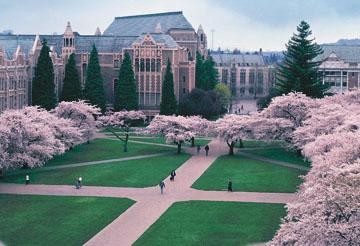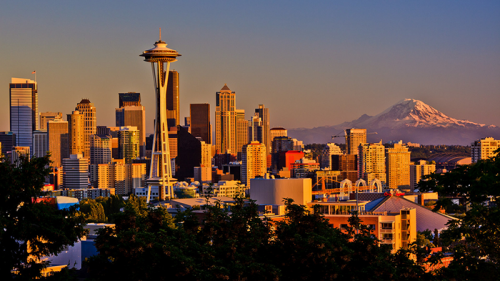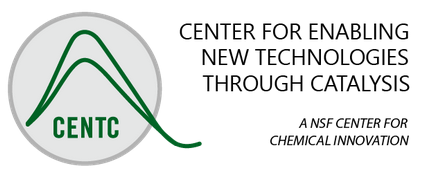

VIPEr Workshop: Heterogeneous Catalysis at the Frontiers of Inorganic Chemistry
University of Washington, Seattle, WA
June 28 – July 3, 2015
This workshop encoils inorganic faculty, postdocs, and graduate students into the supportive community of scholars known as IONiC (Interactive Online Network of Inorganic Chemistry). Inorganic chemistry is one of the broadest fields in chemistry, covering the entire Periodic Table of the Elements, yet faculty members tend to be narrowly trained in a single subdiscipline. Stepping into the inorganic classroom, where knowledge of all of the subdisciplines is expected, can be daunting. Collaboration with colleagues from different inorganic subfields is an obvious solution to this problem, but geographical and professional isolation, especially at small institutions, inhibits such collaborations. This workshop provides an opportunity to network and collaborate with other inorganic chemists and to deepen knowledge in the broad topic of catalysis which spans all of the subdisciplines of inorganic chemistry. The products of this workshop will introduce students to advances in and applications of catalysis to a variety of important problems.
The IONiC community supports faculty interaction through its web home, VIPEr (Virtual Inorganic Pedagogical Electronic Resource www.ionicviper.org). Participants in this workshop will learn about the resources on VIPEr and become active VIPEr contributors. The workshop theme, catalysis, will add a "back to grad school" feel to the workshop, with participants immersing themselves in cutting edge chemistry, learning from leading researchers in the field, and creating new learning opportunities for their students. The research experts for this workshop will be Karen Goldberg from the host institution, Shannon Boettcher from the University of Oregon, Jillian Dempsey from UNC-Chapel Hill and Cliff Kubiak from UCSD.
Participants will work collaboratively to develop new teaching materials that provide modern catalytic examples to teach inorganic chemistry concepts. Before the workshop, there will be a short pre-workshop web conference that introduces participants to one another and to the web-based collaboration tools that IONiC uses. Participants and workshop leaders will discuss what resources the participants will want to bring to the workshop.
Our NSF grant will pay for lodging and several meals and all workshop expenses. Attendees must provide their own transportation to the University of Washington but are encouraged to seek funding from their faculty development programs at their home institutions. Applications for this workshop are now closed.


POST-WORKSHOP RESULTS!
These are the Learning Objects (LOs) that were produced by the participants at the UW Catalysis TUES workshop!
| Individual LOs Developed for the Workshop | |||
| LO title | LO Type | Author(s) | Institution |
| Photoredox Dual Catalysis for Decarboxylative Cross Coupling Reaction | Literature Discussion | Keying Ding | Middle Tennessee State University |
| High Energy Density Materials: Bond enthalpy and safety considerations | In-Class Activity | Kevin Hoke | Berry College |
| Isomers within the same point group | Problem Set | Sarah St. Angelo | Dickinson College |
| Gummies and Toothpicks Point Group Determination Activity | In-Class Activity | Darren Achey | Kutztown University |
| Peer Review - How does it work?: A literature discussion with a focus on scientific communication | Literature Discussion | Michael Norris | University of Washington |
| Orbital Viewer: Visualize atomic and molecular orbitals | Web Resources and Apps | Kate Plass | Franklin & Marshall College |
| The electronic structure and properties of an iron coordination complex that exhibits thermochromism | Problem Set | Keith Krise | Gannon University |
| Synthesis of Aspirin- A Lewis Acid Approach | Lab Experiment | Katie Field | Worcester Polytechnic Institute |
| Carolyn Supplee | Rowan University | ||
| High Energy Density Materials: A laboratory and literature investigation | Literature Discussion | Kevin Hoke | Berry College |
| Electron Donating and Steric Properties of Various Ligands and Ways to Access Them: Cp vs. Tp vs. Cp* vs. Tp* | Problem Set | Anna Larsen | Ithaca College |
| Lewis Structure Challenge | In-Class Activity | David Laviska | Rider University |
| The Nature of Science | In-Class Activity | Lori Watson | Earlham College |
| Analyzing Ir(III) Complexes by NMR? | Problem Set | Vanessa McCaffrey | Albion College |
| Use of Toulmin’s Argumentation Scheme in Explaining Inorganic Chemistry | In-Class Activity | Kate Plass | Franklin & Marshall College |
| Copper Oxide Crystal Growth | Literature Discussion | Ellen Steinmiller | University of Dallas |
| Learning Science! Think Like a Researcher! | Literature Discussion | Christina McCartha | Newberry College |
| Teaching and Learning Package Library from University of Cambridge | Web Resources and Apps | Vanessa McCaffrey | Albion College |
| Nomenclature of Coordination Complexes using Automated Response Systems | In-class Activity | James Kirby | Quinnipiac University |
| Change in Magnetic Susceptibility as a Function of Temperature: Spin-Crossover | Problem Set | Fabiola Barrios Landeros | Yeshiva University |
| Chemistry Infographics from Compound Interest | Web Resources and Apps | Darren Achey | Kutztown University |
| Questions Arising from a Primary Literature Report of Tungsten Complexes of N-Heterocyclic Carbenes | Problem Set | Paul Fischer | Macalester College |
| The Messy Chemist: Separating a Solid Mixture | Lab Experiment | Michael Norris | University of Washington |
| Vibrational Modes and IR Spectra using Character Tables | In-Class Activity | Karen McFarlane Holman | Williamette University |
| Vibrational Modes and IR Spectra for Intro Chem | In-Class Activity | Karen McFarlane Holman | Williamette University |
| Bi-weekly literature discussion with ASAP alerts | Literature Discussion | David Heroux | St. Michael's College |
| Questions on Point Groups and Chirality | Problem Set | Sarah Goforth | Campbell University |
| Introduction to Miller Indices | Web Resources and Apps | Vanessa McCaffrey | Albion University |
| High Energy Density Materials: A laboratory and/or literature investigation | Literature Discussion | Kevin Hoke | Berry College |
| Simple Orbital Overlap Exam Question | Problem Set | Sarah Goforth | Campbell University |
| Kinesthetic Learning: Cyclic Voltammetry Mechanisms | In-Class Activity | Chip Nataro | Lafayette College |
| Team LOs Developed Based on the Expert Talks for the Workshop | |||
| LO title | LO Type | Author(s) | Institution |
| A discussion on "Electrochemical formation of a surface-adsorbed hydrogen-evolving species" | Literature Discussion | Kevin Hoke | Berry College |
| Darren Achey | Kutztown University | ||
| Fabiola Barrios Landeros | Yeshiva University | ||
| Getahun Merga | Andrews University | ||
| Michael Norris | University of Washington | ||
| Ir(III) Catalyst Regeneration Using Molecular Oxygen: Addressing Key Challenges that Hinder Alkane Dehydrogenation Catalysis. A Literature Discussion | Literature | Vanessa McCaffrey | Albion College |
| Anna Larsen | Ithaca College | ||
| David Laviska | Rider University | ||
| Keying Ding | Middle Tennessee State Univeristy | ||
| Paul Fischer | Macalester College | ||
| Literature Discussion: Manganese mesbpy electrocatalysts for carbon dioxide reduction | Literature Discussion | Tina McCartha | Newberry College |
| James Kirby | Quinnipiac University | ||
| Katie Field | WPI | ||
| Keith Krise | Gannon University | ||
| Sarah Goforth | Campbell University | ||
| Literature Based Exam Questions Themed on Mn Electrocatalysis for Carbon Dioxide Reduction | Problem Set | Sarah Goforth | Campbell University |
| Tina McCartha | Newberry College | ||
| James Kirby | Quinnipiac University | ||
| Katie Field | WPI | ||
| Keith Krise | Gannon University | ||
| Can we interpret XPS and CV data? You Boettcher! | Literature Discussion | Karen McFarlane Holman | Williamette University |
| David Heroux | St. Michael's College | ||
| Ellen Steinmiller | University of Dallas | ||
| Kate Plass | Franklin & Marshall College | ||
| Sarah St. Angelo | Dickinson College | ||
| Does this research article exemplify the Scientific Method? You Boettcher! | Literature Discussion | Sarah St. Angelo | Dickinson College |
| David Heroux | St. Michael's College | ||
| Ellen Steinmiller | University of Dallas | ||
| Karen McFarlane Holman | Williamette University | ||
| Kate Plass | Franklin & Marshall College | ||
| Analyzing a journal article for basic themes, roles of authors and the scientific method | Literature Discussion | Darren Achey | Kutztown University |
| Fabiola Barrios Landeros | Yeshiva University | ||
| Getahun Merga | Andrews University | ||
| Kevin Hoke | Berry College | ||
| Michael Norris | University of Washington |